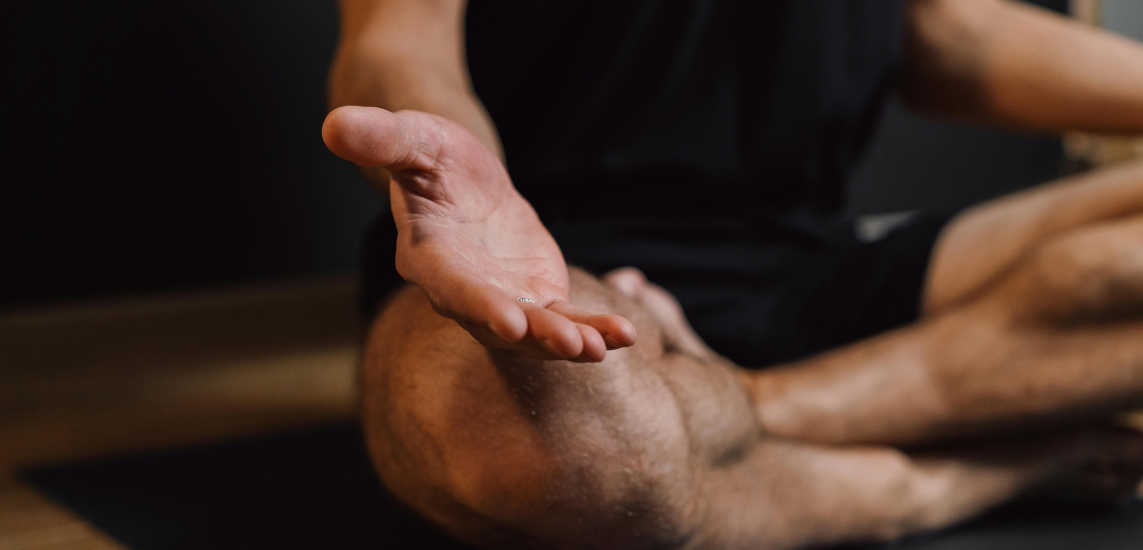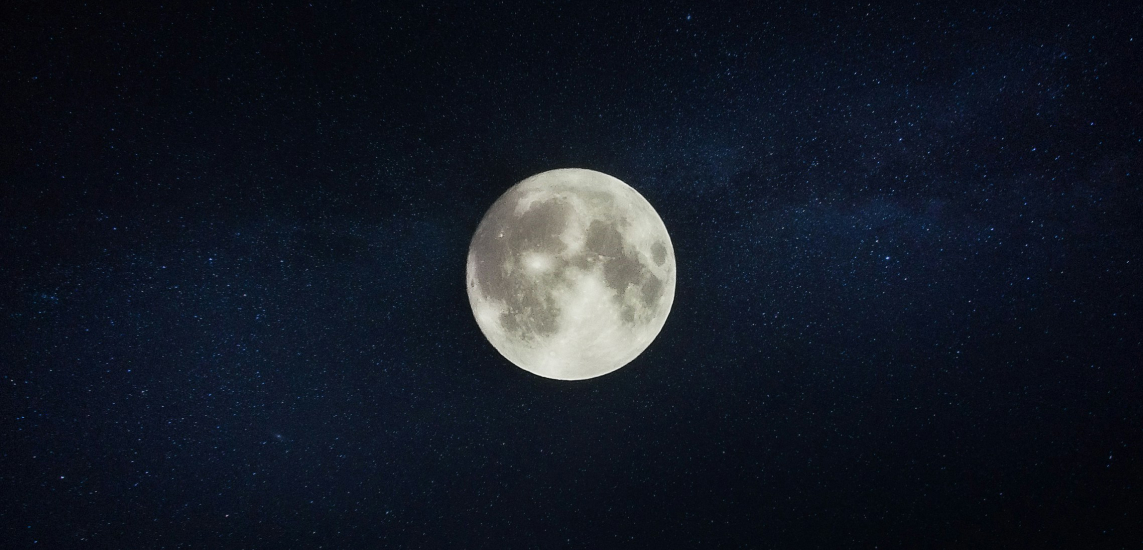It’s common for yogis to find themselves distracted during practice. While a little distraction may seem harmless, it can impact alignment and awareness.
An approach called drishti helps anchor your mind in the present, improving your concentration and balance. It involves softly gazing at a focal point to cultivate a deeper concentration level and tune in with your body.
Here, we explore the multiple layers and meanings of drishti and how they help with alignment and awareness.
Key takeaways
- Drishti is a yogic gaze that helps you channel both your energy and focus towards positive aspects of life.
- There are different ways of practicing drishti, including yoga and meditation.
- You can improve your drishti by resisting the urge to close your eyes during your gaze, softening your gaze, and shifting your focus gradually.
- There are eight primary drishti in yoga.
- Drishti offers numerous benefits, including improving your decision-making, helping you harness your inner energy, and enhancing your mind-body connection.
Defining drishti, a multifaceted concept: What does the term drishti mean in English?
A Sanskrit dictionary defines drishti as a sight or seeing, a glance or a look, aim, or attention. In Ayurvedic practices, drishti is the name of the center of the retina.
However, in yoga, drishti refers to the gaze itself or the point of focus. Drishti can be with or without form and can be physical or visual. It can also refer to the focus or point of view of the mind.
It’s a means of developing concentrated intention, the ability to cut through illusion and see the world as it is. Through drishti, gazing at focal points — like the tip of the nose, navel, hand, center of the forehead (or the third eye/ajna chakra), thumb, or toes — helps us stay focused during practice.
This focus is not just about sight but about understanding how perception can shape our interaction with the world. Drishti can describe the physical eye or the mind’s eye, or it can also have other spiritual meanings.
Drishti can be used to help channel prana. Explore what prana is and how to feel it.
How to practice drishti
Drishti is a technique of intentionally gazing at a focal point. While drishti is mostly practiced during yoga, this technique can also be used in other ways. Here are the three main ways we can practice drishti.
Yoga
When working with drishti in your yoga class, find a balance between single-pointed focus and a soft, easy gaze. If you find yourself staring, straining your eyes, or not blinking, go easy. Remember that the goal isn’t a fixed seeing of the object but to steady the activity of the mind.
By developing a steady gaze, we free ourselves from vision altogether and tap instead into the felt experience of each pose. Many poses have specific directions for drishti:
- Adho mukha svanasana (downward-facing dog): We gaze at the navel.
- Virabhadrasana (warrior pose): Our eyes look up.
- Vrksasana (tree pose): We focus our drishti to help maintain balance.
- Trikonasana (triangle pose): We gaze upwards or downwards.
- Pashchimottanasana (seated forward bend pose): Our eyes focus on the toes.
We can even practice yoga with our eyes closed. Drishti transcends what’s seen of the outside world to illuminate the world within.
Meditation
In meditation, we can play with drishti by trying meditations with our eyes open, focused softly on an object or a certain point towards the earth ahead of us. We can also practice with our eyes closed by visualizing an object or a single point. It’s possible to strain our eyes even when they’re closed, so remember to keep the gaze soft.
Sometimes, you’ll find an outer visual anchor that helps calm the mind, while other times, your inner focus is sharpened by closing your eyes.
Life
By working with drishti, an inner single-pointed focus is achieved. This helps us develop the wisdom to no longer be pulled from right to left by various distractions and instead remain balanced and grounded. By applying drishti in our yoga practices and our meditations, we can better integrate the wisdom of this practice into our lives.
Explore informal meditation practices to bring your practice off the cushion and into your daily life.
What are the benefits of practicing drishti in yoga?
Practicing drishti in yoga offers many benefits that extend beyond the mat, influencing both our physical practice and mental well-being.
Here are some key advantages:
Improves clarity in decision-making
Practicing drishti helps you clear mental clutter that often hinders your progress. With a clearer mind, you can make sound decisions that align with your values and life aspirations.
Harness your inner energy
Drishti hones your attention on the things you desire. In doing so, it teaches you to channel your energy, focus, and intention toward a desired outcome or chosen path.
Enhances mind-body connection
Practicing and embodying drishti helps you focus and deepen the connection between your mind and body. When directing your gaze toward specific body parts, you activate and energize them, establishing a profound mind-body unity.
Focus selective attention
Selective attention is a vital function that enables our brains to filter out distracting information while processing relevant sensory information. Practicing drishti can help enhance selective attention.
According to a Saudi Journal of Sports Medicine study, practicing nasikagra drishti can improve a student’s selective attention, consequently improving their academic performance. In the study, students significantly improved their selective attention score after practicing nasikagra drishti.
How does drishti work in yoga?
Drishti and the mind’s eye
In yoga, we use drishti initially to enhance body awareness and improve the alignment of the physical body in asana and our thoughts with continued practice.
When we turn our drishti inward, it deepens our understanding of our perceptions. This internal focus helps us recognize that our perceptions are constantly evolving and that they do not define a singular, unchanging essence. In fact, what we see is changing and has no single essence.
By concentrating our focus on seeing, we realize how much of our ordinary view is clouded by our memories, prejudices, judgments, and thoughts. Through drishti, this illusion is lifted, and we see clearly that things change. The world is perfect exactly as it is, and we’re intimately interconnected with it.
This realization of the impermanence and interconnectedness of all things naturally leads us to explore how drishti integrates into the broader framework of spiritual concepts like yoga’s eight limbs. Let’s consider how drishti connects with these foundational aspects of yogic philosophy.
Discover how to come to your senses and bring more awareness to your asana practice.
Drishti and yoga’s eight limbs
The Hindi sage Patanjali described an eight-part yogic path toward enlightenment called ashtanga yoga. “Ashta” means eight, and “anga” means limb, so this practice is described as yoga’s eight limbs.
The eight limbs of yoga guide us toward enlightenment by improving ethical conduct, self-care, posture mastery, and breath control. Drishti enriches this process by deepening our physical and mental focus.
Here’s how drishti ties into the eight limbs of yoga:
Yama and niyama
These first two limbs set the ethical and moral groundwork, preparing the practitioner mentally and spiritually for deeper practice. Drishti supports these by helping maintain focus and intention, aligning with non-harming principles, truthfulness, and self-discipline.
Asana
In physical postures, drishti improves balance and alignment, directing energy flow efficiently through the body. It helps maintain pose integrity and deepen physical practice.
Pranayama
The focused gaze aids in controlling the breath, which is vital in mastering pranayama. By directing the gaze at a single point, distractions are minimized, allowing for deeper breath control and energy regulation.
Pratyahara
This limb involves withdrawing the senses from external objects to diminish distractions. Drishti is a tool that facilitates this withdrawal, helping to turn the focus inward and quiet the mind.
Dharana
Directly linked to drishti, dharana involves deep concentration on a single point. By using drishti, yogis can cultivate a powerful focal point that aids in developing concentration.
Dhyana
As concentration deepens into meditation, drishti helps maintain a subtle focus that bridges the gap between active focus and passive observation. This is essential for achieving the detached meditative state of the seventh limb.
Samadhi
The ultimate goal of yoga practice is to reach the eighth limb, a state of enlightenment where the individual self merges with the universal.
Drishti is more intricately linked to the practices of the fifth and sixth limbs of yoga, pratyahara and dharana. Drishti supports the transition from pratyahara to dharana, enhancing our mindfulness and meditative practices.
Each limb, however, serves as a step on the path to samadhi, with drishti acting as a thread that connects and enhances the practice.
FAQs about drishti
Is drishti part of the Yoga Sutras?
While drishti enhances the practice of the eight limbs of yoga mentioned in the Yoga Sutras, it is not directly mentioned in the collection. However, the practice of drishti occurs in the Hindu scripture Bhagavad Gita, when Krishna instructs Arjuna to “hold one’s body and head erect in a straight line and stare steadily at the tip of the nose.”
How does drishti work?
Drishti works by focusing our gaze and attention toward a specific focal point. It helps calm the mind, deepen yoga practices, and enhance overall concentration.
How many drishti are there in yoga?
There are eight ways to practice drishti with yoga, namely bhrumadhya drishti (between the eyebrows), nasikagra drishti (the nose tip), hastragai drishti (the hand), nabhi chakra drishti (the navel), parshva drishti (far to the right), padayoragrai drishti (the toes), urdhva drishti (upward toward the sky), and angusthamadhye drishti (the thumbs). These different types of drishti require yogis to focus their gaze and attention on a specific part of the body to enhance concentration and alignment.
How can you improve your drishti?
Drishti channels our attention inward, thereby deepening our practice. You benefit even more from drishti by softening your gaze, shifting your focus gradually rather than abruptly, and resisting the urge to shut your eyes. You should also avoid straining your body during practice.
References
- www.wisdomlib.org. (2024, March 17). Drishti, Dṛṣṭi, Drishtin, Dṛṣṭin: 40 definitions. https://www.wisdomlib.org/definition/drishti
- Maehle, G. (2007). Ashtanga Yoga: Practice and Philosophy. United States: New World Library. https://www.google.com/books/edition/Ashtanga_Yoga/zV6iAAAAQBAJ?q=&gbpv=0#f=false
- Rathore, K., Choudhari, M., & Jain, N. (2021). “A conceptual study of Drishti in Ayurvedic and modern point of view”. Ayurline: International Journal of Research in Indian Medicine, 5(02). https://doi.org/10.52482/ayurline.v5i02.520
- Chauhan, D., Singh, K., & Mehta, A. (2010). A clinical study on ADHIMANTHA and it′s management with Nayanamrita Lauha and Triphaladi Varti. AYU (An International Quarterly Journal of Research in Ayurveda), 31(1), 62. https://doi.org/10.4103/0974-8520.68206
- Balakrishnan, P., & Ashwini, M. (2014). Conceptual analysis of physiology of vision in ayurveda. Journal of Ayurveda and Integrative Medicine, 5(3), 190. https://doi.org/10.4103/0975-9476.140486
- Srinivasan, T. (2013). From meditation to dhyana. International Journal of Yoga, 6(1), 1. https://doi.org/10.4103/0973-6131.105934
- Pooley, J. (2023, September 8). The Transformative Power of Drishti & Focusing on Manifesting Your Desired Life. Jason Pooley Coaching . https://www.linkedin.com/pulse/transformative-power-drishti-focusing-manifesting-pooley-coaching/
- Madankumar, S., & Kalpanadevi, M. (2019). Nasikagra Drishti to enhance the selective attention on performance of six-letter cancelation task by young adults. Saudi Journal of Sports Medicine, 19(1), 17. https://doi.org/10.4103/sjsm.sjsm_7_19





-1.jpg)

